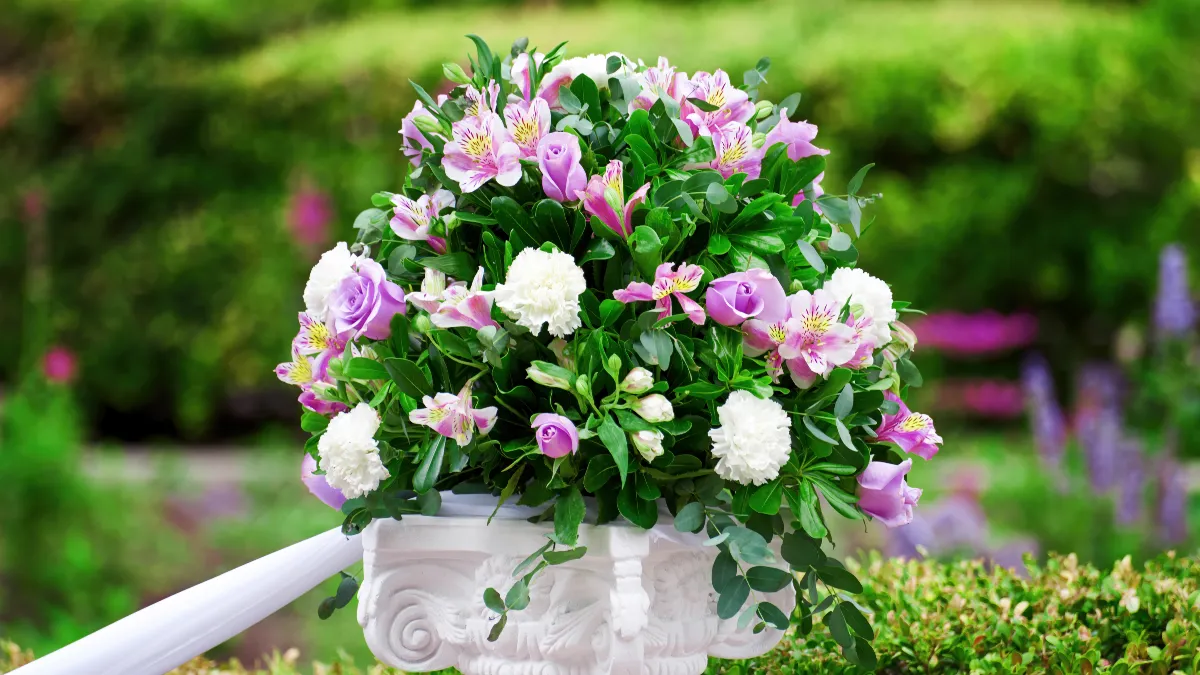You don’t need acreage to get color, fragrance, and pollinators—just the right plan for your zone. Most people stall out choosing plants because they’re not sure what truly thrives where they live. Add worries about water use, heat waves, and keeping blooms going from early spring to late fall, and it’s easy to give up or default to thirsty, short-lived choices. This guide fixes that with backyard flower garden ideas you can act on right away.
You’ll learn a zone-aware process for picking plants, compact layouts that make small yards feel bigger, focused pollinator garden ideas, and a short list of drought-tolerant flowers that still deliver color. Step one is knowing your current plant hardiness zone: the USDA updated its Plant Hardiness Zone Map in November 2023 for the first time since 2012.
Many ZIP codes shifted warmer, which changes what will overwinter reliably. Extension groups such as Master Gardeners of Northern Virginia and researchers at USDA Agricultural Research Service (ARS) highlight this shift and recommend re-checking your zone before you buy a single plant. With the right plant list, simple design rules, and water-smart care, you’ll build a backyard that looks good, supports wildlife, and survives summer without constant babysitting.
Know Your Zone: Pick Plants That Will Thrive

Start Smart: Your Zone-First Garden Gameplan
Evidence-based steps to choose plants that return, feed pollinators, and handle your site—without guesswork.
From ZIP to Shortlist in 20 Minutes
Confirm Your Zone
USDA updated the Plant Hardiness Zone Map in Nov 2023. Many locations shifted a **half-zone warmer**, per USDA Agricultural Research Service.
Match Site Conditions
Note hours of sun, soil drainage, and irrigation. Shortlist region-appropriate natives first to reduce water and boost wildlife support (Xerces Society).
Plan Bloom Succession
Build a simple **bloom calendar** so something flowers from early spring through late fall (U.S. Forest Service guidance).
What a “Zone” Actually Means
| USDA Zone | Extreme Min (°F) | Extreme Min (°C) | Rule of Thumb |
|---|---|---|---|
| 3 | −40 to −30 | −40 to −34 | Very hardy only |
| 4 | −30 to −20 | −34 to −29 | Arctic-tough perennials |
| 5 | −20 to −10 | −29 to −23 | Most “hardy” classics |
| 6 | −10 to 0 | −23 to −18 | Wide plant palette |
| 7 | 0 to 10 | −18 to −12 | Many shrubs & perennials |
| 8 | 10 to 20 | −12 to −7 | Long seasons; heat care |
| 9 | 20 to 30 | −7 to −1 | Mild winters; drainage key |
| 10 | 30 to 40 | −1 to 4 | Tender perennials survive |
Zones change
2023 map is GIS-driven and more precise (USDA ARS). Re-check your zone before buying perennials.
10°F per zone
Each full zone ≈ 10°F band in average annual **extreme minimum** temperature.
Cluster plants
Group **3–7** of a kind to help pollinators locate blooms efficiently (U.S. Forest Service habitat guidance).
One-View Bloom Calendar (Example)
Use this as a template—swap species for your ZIP. Aim for overlap across seasons to avoid nectar gaps.
Bars indicate approximate bloom windows across the year (left = spring, right = late fall). Adjust species by zone and sun.
Before you sketch a bed line or buy a flat of flowers, confirm your USDA hardiness zone. The 2023 USDA Plant Hardiness Zone Map incorporates updated 30-year temperature normals and moved many areas a half zone warmer; ARS notes the new GIS map is more precise and user-friendly. If you haven’t checked since 2023, do it now—winter lows determine which perennials will actually return.
Next, match plants to sun, soil, and moisture on your exact site. Start with natives adapted to your region; they typically need less water and feed more insects and birds. The Xerces Society publishes regional native plant lists and a nursery/seed directory to help you source locally grown material. For ZIP-specific lookups, use Audubon’s Native Plants Database (built on BONAP data) and the National Wildlife Federation’s Native Plant Finder; both return species suited to your locality and the wildlife they support. Shortlist 10–15 plants that fit your light and soil, then narrow to 6–8 anchors that repeat across the bed for unity.
Finally, build a simple bloom calendar so something flowers from early spring through late fall. Group each species in clusters of 3–7 to help pollinators find them, and plan overlap between seasons. Agencies like the U.S. Forest Service emphasize season-long resources (not just a spring spike) for bees, butterflies, and night pollinators such as moths and bats. Jot months beside each shortlisted plant, then fill gaps with early bulbs and late perennials (asters, goldenrods) to extend the season. This “plan first, buy second” step prevents impulse purchases and gives you reliable color plus habitat.
Design Smart: Layouts for Small Backyards
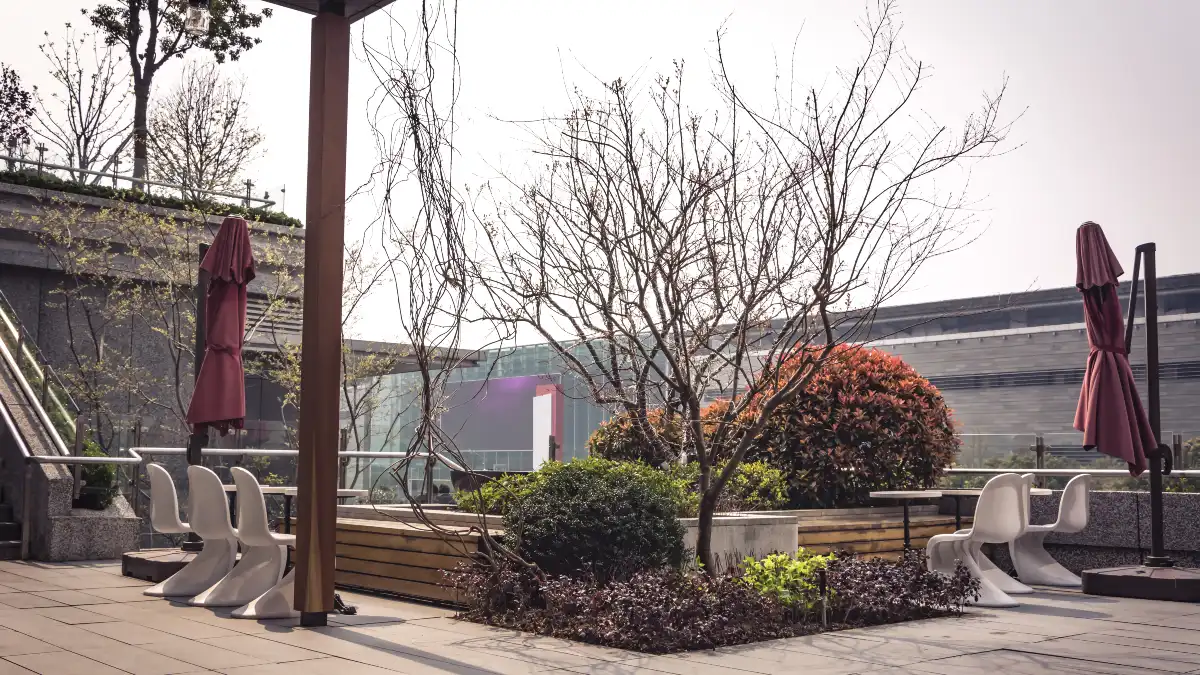
Great small gardens look intentional because they follow a few design principles: order, unity, proportion, and repetition, plus variety in form, line, texture, and color. Extension guidance (e.g., Penn State Extension) teaches that repeating forms and colors creates unity, while proportion keeps tall and wide plants scaled to the space. Keep a limited palette and repeat it—your eye will read the garden as calm rather than cluttered.
Three plug-in layouts that work almost anywhere:
- Front-border curve (narrow bed along a fence or patio edge): Sweep a gentle S-curve; place tallest plants (e.g., ornamental grasses, taller perennials) at the “peaks,” mediums in the midline, and low bloomers at the front.
- Corner triangle bed (6–10 ft sides): Anchor the back corner with a statement shrub/trellis, layer mediums to the midpoint, and finish with groundcovers/spillers at the front.
- Path-linked island beds: Two small ovals connected by a stepping-stone path; repeat the same 4–6 plants in both ovals for unity and easy maintenance.
Use verticals—trellises, obelisks, wall planters—to add height without stealing floor space, and tuck containers at focal points for seasonal color swaps. Designers at platforms like Gardenary routinely show how a bistro set, bench, or fire bowl creates a seating focal point and establishes sightlines from your most-viewed window. The CSU (Arapahoe County) Extension 2024–25 design series also breaks down these principles for home gardeners and ties them to climate-appropriate plant choices.
Quick setup: Outline your bed with a hose, take a photo from eye level, and sketch plant heights onto the image. If any view looks busy, remove one plant type and repeat the remainder—repetition is the fastest path to polish.
Plant for Pollinators: Native + Continuous Bloom
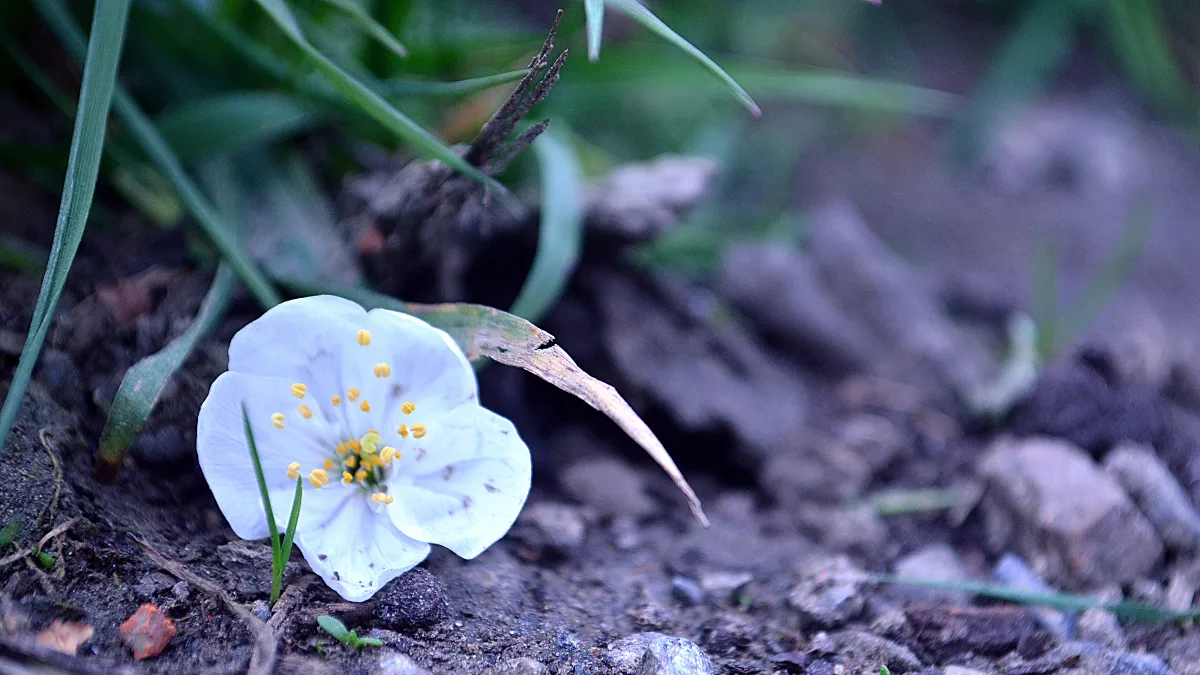
Pollinators need food and habitat all season, not a one-month burst. Start by clustering plants (3–7 of a kind) and staggering bloom times: spring (bulbs, penstemons), summer (coneflowers, salvias), fall (asters, goldenrods). The U.S. Forest Service underscores that bees, butterflies, hummingbirds—and even night pollinators like moths and some bats—rely on staggered flowering to bridge seasonal gaps. Consider a small “moon” corner with fragrant, dusk-opening blooms (e.g., evening primrose, nicotiana, phlox) to support nocturnal insects.
Mix regional natives with nectar-rich heirlooms and culinary herbs (basil, oregano, borage). The USDA and many extension programs note that herb flowers are highly attractive to beneficial insects while doubling as kitchen staples. Keep plantings pesticide-free and provide water (a shallow dish with stones for perches) plus nesting habitat (bare soil patches for ground-nesting bees, hollow stems left over winter). For region-ready plant lists and reputable sources, lean on the Xerces Society (regional plant lists, seed mixes, and nursery directory). To tailor by ZIP, use Audubon and NWF Native Plant Finder to cross-check species that perform locally and support the most wildlife.
About “No Mow May”: evidence is mixed. Turf scientists and ecologists have pointed out trade-offs—e.g., lawns left unmown for a month can create management issues and don’t necessarily deliver the most nutritious flowers for native bees. University and Extension voices (University of Minnesota; Wisconsin Horticulture) suggest better results by raising mowing height, mowing less often overall, or converting parts of lawn to bee-friendly plantings and continuous bloom beds. In short: aim for diverse flowering from early spring to late fall, not a single month off.
Color That Lasts: Seasonal Flower Combos
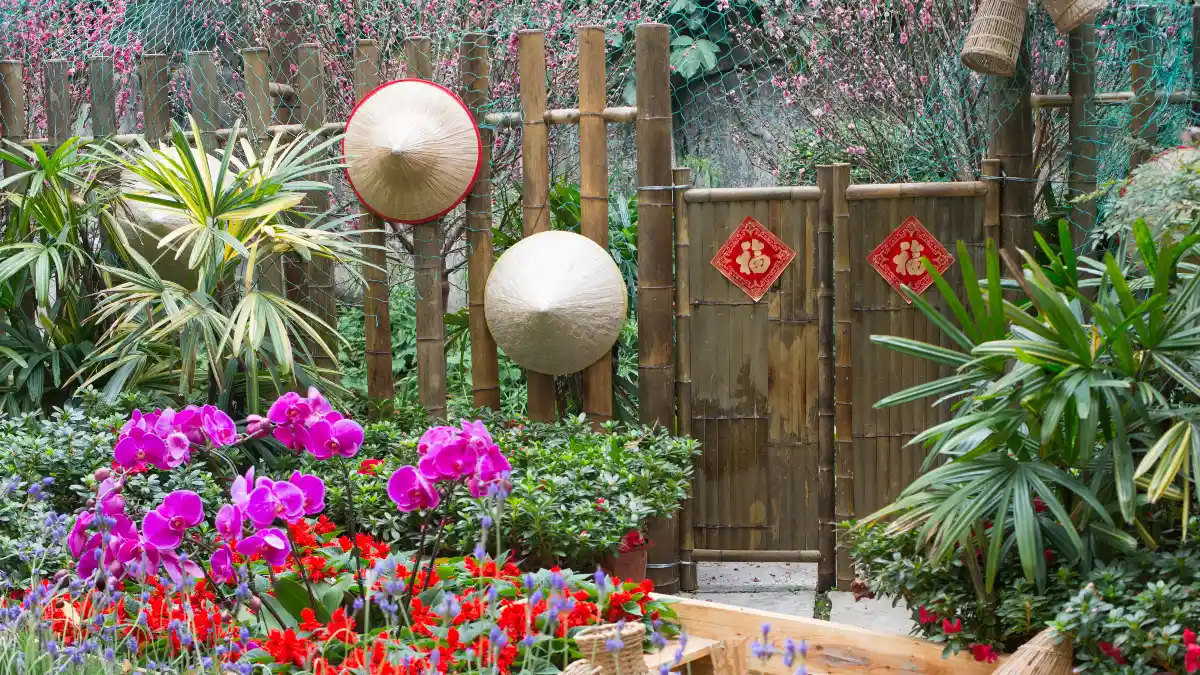
For reliable color (and less guesswork), plan by seasonal waves and repeat plants in small clusters. In spring to early summer, pair early bulbs (tulips, alliums, muscari) with low-maintenance perennials that hide fading bulb foliage—think lungwort (Pulmonaria), catmint (Nepeta), and salvia. That gives you fragrance and early pollinator fuel, then sails smoothly into June.
In mid to late summer, lean on heat lovers with long bloom windows: coneflower (Echinacea), blanket flower (Gaillardia), Russian sage (Perovskia/Salvia yangii), agastache, and verbena. These hold color in heat without daily watering. For fall, extend the show with asters and goldenrods for pollinators, add a shade-tolerant surprise like toad lily (Tricyrtis), and layer ornamental grasses (switchgrass, little bluestem, pink muhly grass) for movement and glow in low sun.
Better Homes & Gardens’ recent fall lists spotlight exactly these combinations—including Agastache, Aster, Rudbeckia, Joe-Pye weed, and Pink Muhly Grass—because they keep borders lively deep into autumn.
Don’t forget shoulder-season containers to punctuate beds and porches. As nights cool, swap tired annuals for mums, pansies, sweet alyssum, and ornamental kale/cabbage—classic, cold-tough choices that pop on grey days. Gardening Know How’s 2025 basket guidance also suggests pairing cool-season flowers with textural grasses for vertical impact (a great trick for small spaces). Keep baskets watered at dawn and deadhead weekly to push new buds.
Beat the Heat: Drought-Tolerant Flower Ideas
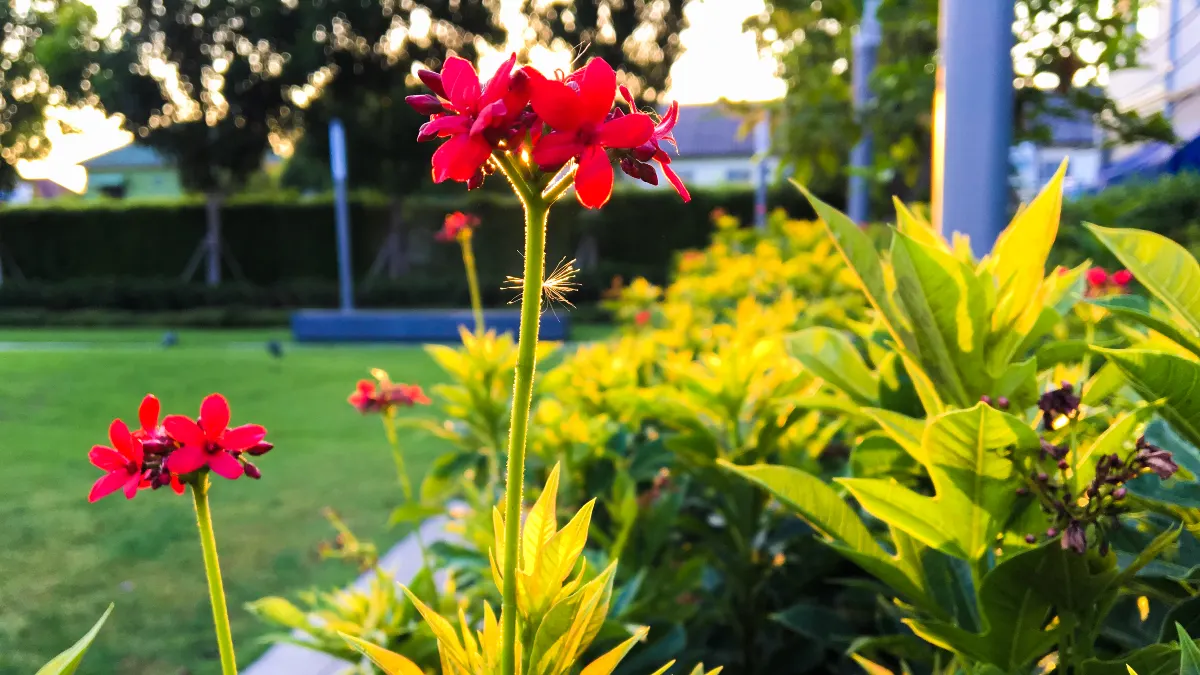
Start by picking region-appropriate, drought-tolerant perennials so your garden thrives when rain doesn’t show. Penn State Extension highlights stalwarts like lavender (Lavandula), gaillardia, echinops, and nepeta—all sun-lovers with lean-water habits and long bloom. Group them by water needs and mulch 2–3 inches to lock in moisture. In hotter pockets, add salvia, coreopsis, and sedum for season-long color with light-touch care.
If you’re in the West (summer-dry climates), choose plants that evolved for it. Oregon State University Extension recommends woody workhorses for sunny, dry sites—Ceanothus (California lilac), Cistus (rockrose), and Arctostaphylos (manzanita). These anchor a border, shelter pollinators, and look good all year, especially when underplanted with heat-hardy perennials like gaura and yarrow. Establish with careful watering the first season, then taper off; most will run on rainfall once rooted.
Keep an eye on new introductions bred for heat resilience. Trade publications (e.g., Greenhouse Management) have profiled Agastache cana ‘Zuni’, a sun-loving, heat- and drought-tolerant selection with a long bloom window that draws pollinators. Newer agastaches and salvias often combine compact form with season-long color—ideal for small beds and containers.
For confidence picks, look at independent trial data. The Colorado State University Flower Trial Gardens publish “Top Performer” perennials each year based on multi-season performance under intense sun and intermittent irrigation; the 2024 trial results (released May 2025) and ongoing perennial trials identify cultivars that stayed showy with less fuss. Cross-check your shortlist against these winners to reduce risk before buying.
Water-Wise Care: Mulch + Efficient Irrigation
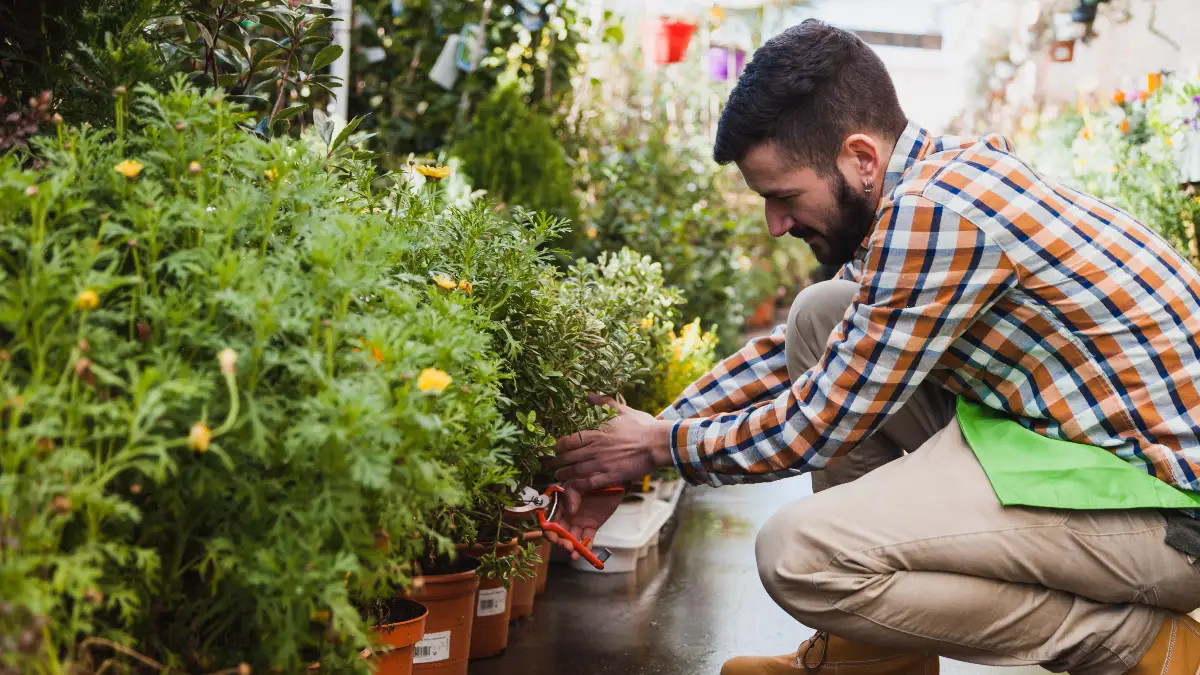
Mulch is your first water-saving tool. Most extensions recommend 2–4 inches—use the higher end for coarse chips and the lower end for finer materials. Classic arboriculture research found ~7.5 cm (≈3 inches) hits a sweet spot: it boosts soil moisture and suppresses weeds without smothering roots. University guides in 2024–25 continue to echo ~3 inches for perennial beds and caution against thicker layers around new plantings. Keep mulch a few inches off stems, and top up annually to maintain depth.
Right-size irrigation. EPA WaterSense estimates about 30% of household water goes outdoors (up to 70% in hot/dry regions), and much of that is lost to inefficient systems. Prioritize drip or microirrigation for beds—it delivers water to the root zone and typically uses 20–50% less than conventional sprays. Where you keep sprays (e.g., lawn edges), use WaterSense-labeled pressure-regulated spray bodies to prevent misting and overspray; EPA literature and manufacturer summaries peg average savings from these PRSBs at around 18%. Program watering at dawn, deeply and infrequently, and group plants by water needs so you’re not overwatering tough perennials to keep a thirsty one alive.
Why pressurized beats gravity (and what it means for you): USDA’s Economic Research Service shows that pressurized systems (sprinkler/drip) are generally more water-efficient than gravity methods because they lose less to evaporation and runoff. That’s agriculture-scale data, but the principle translates to home landscapes: keep water low and targeted to reduce loss. Inspect lines monthly for leaks, flush emitters once a season, and adjust run times after rain.
Containers in heat: Add a thin mulch cap (shredded bark or even small bark nuggets), water until you see flow from the drain hole, then wait until the top inch dries before the next cycle. In prolonged heat, check daily—container root zones heat up fast.
Plug-and-Play Mini Plans (by Goal & Space)
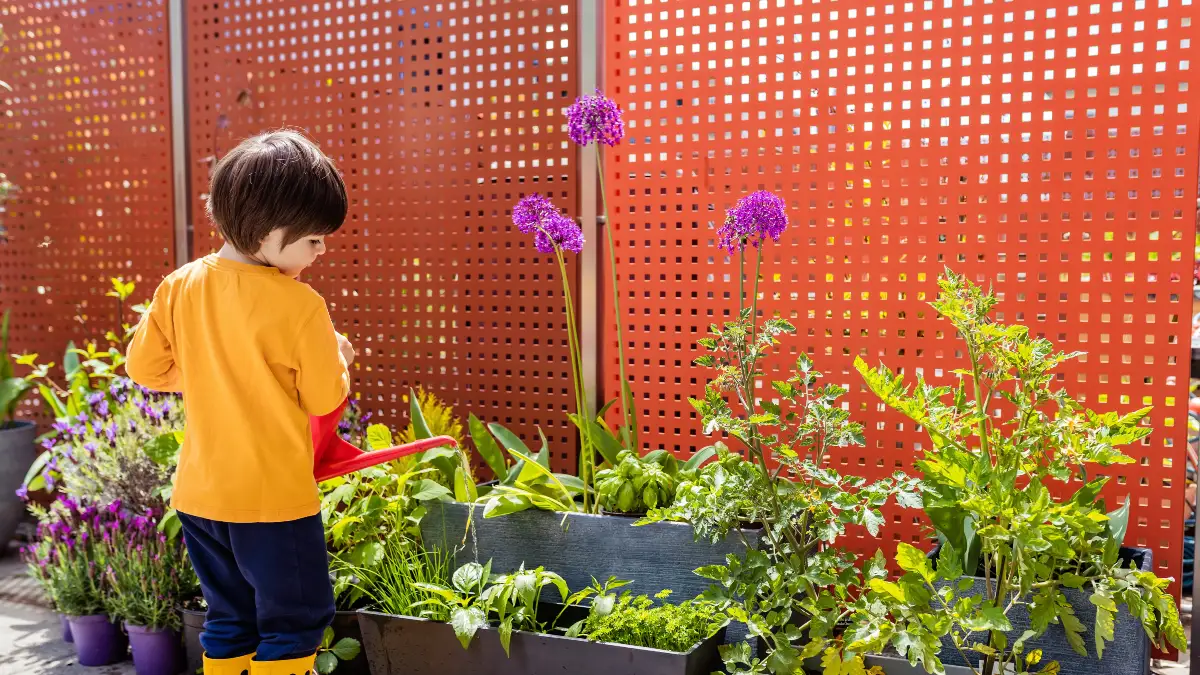
1) Pollinator Patch (6×8 ft)
Goal: Continuous bloom + habitat in a small footprint.
Layout: Back row (tall): Joe-Pye weed (1), switchgrass (1). Mid row: salvia (3), coneflower (3). Front row: catmint (3), allium (5 bulbs) for spring. Edge: herb strip (basil, oregano, thyme).
Season plan: Spring bulbs; summer salvia/coneflower; fall asters/goldenrods (swap 2 catmints for asters if you need more fall color).
Why it works: Clusters feed pollinators, herbs boost nectar and beneficials, grasses add structure. For regional species swaps, use Xerces regional lists and Audubon ZIP tools.
2) Drought-Smart Border (10×3 ft)
Goal: Set-and-forget color with minimal water.
Layout: Back: lavender (3) alternating with echinops (2). Mid: gaillardia (4), nepeta (3). Front/sides: sedum (3) as edging.
Care: Mulch 2–3 inches, water weekly only during establishment (first season), then cut back to rainfall unless there’s a prolonged drought. Seize dry spells to deadhead gaillardia for nonstop blooms. Backed by Penn State Extension drought-tolerant picks.
3) Small-Space Vertical + Pots
Goal: Color at eye level with quick seasonal swaps.
Layout: Narrow trellis with annual climbers (morning glory or hyacinth bean in summer). At the base, two 20″ containers: spring pansies/alyssum, summer agastache/angelonia, fall mums + ornamental kale. Tuck in a small fountain grass for height if there’s room.
Why it works: Verticals create drama without floor space. Gardening Know How’s 2025 fall-basket guidance backs cool-season swaps (pansies, mums, alyssum, kale) for shoulder seasons; the summer combo rides heat without daily watering.
Build like a pro: Measure, sketch heights, repeat plant “families” for unity, and leave 18–24″ of clear edging for maintenance. Revisit at the equinoxes to adjust bloom gaps and refresh mulch.
Conclusion
To keep your garden gorgeous and resilient, re-check your zone, then design with layers and repetition so the space reads clean. Choose region-appropriate natives and drought-tolerant perennials to power through heat while feeding wildlife.
Maintain with a 2–4 inch mulch layer and efficient irrigation (drip or pressure-regulated sprays) to cut water use without sacrificing color. Start small: pick one mini plan, plant a 6×8 ft bed this weekend, and track bloom months so you can plug gaps next season.
Ready? Look up your zone, download a regional native plant list, then lay out your first bed. You’ll get dependable color from spring to fall—and a backyard that truly hums with life. Keywords: backyard flower garden ideas; pollinator garden ideas.

